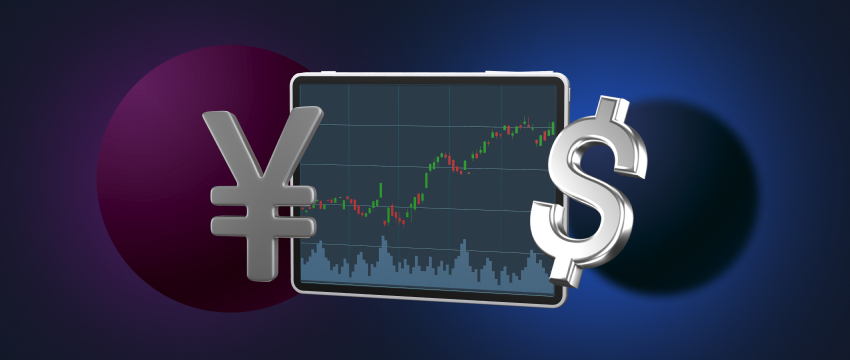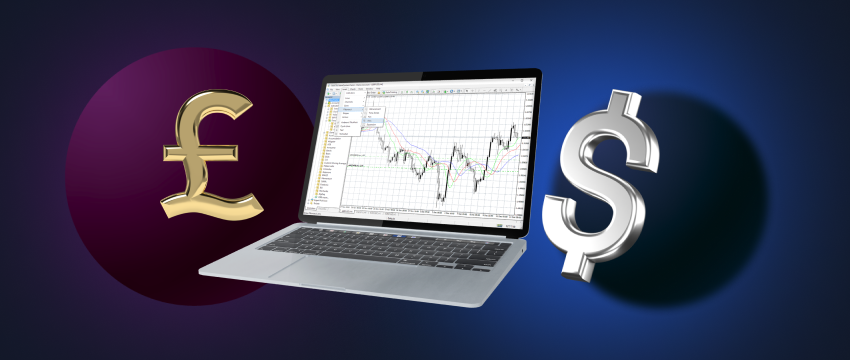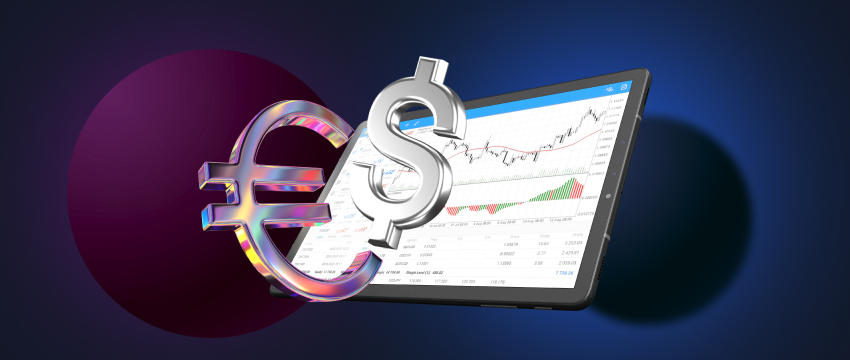To start with, what are currency pairs? Forex currency pairs consist of the currencies of 2 nations. Currency pairs combine the currencies of two nations. The relationship between the values of each currency and trader interest influences the price of the pairs.
Since you always buy or sell one currency when you trade another, you always trade currencies in pairs, similar to purchasing foreign currency for a trip overseas.
There is a base currency and a quote currency in each currency pair. The first currency shown on the left is the base currency whereas the second one on shown on the right, is the quote currency.
The currency pair’s price is the quantity of the quoted currency needed to buy one unit of the base currency. In the EUR/USD for example, the euro is the base currency while the US dollar is the quote currency.
If you’re interested in forex trading but haven’t traded before, you’ll inevitably wonder which currency pair can offer safety to prevent the loss of half your deposit on your first position. The answer is simple: the most stable currency pairs are usually the safest ones. Continue reading to find out which currency pairs are ideal for starting a trading career.

Types of Currency pairs: Majors, minors, exotics
All forex exchange combinations in the FX market usually fall into three categories: Exotics, minors、そして majors. These groups are determined by factors like volatility, liquidity, and trading volume.
Exotic currency pairs include at least one currency from a developing nation such as the USD/MXN or USD/TRY pairs. Their quotes can fluctuate significantly, sometimes within a few seconds, due to their extreme volatility. The volume of trading in exotics by market participants is low due to their comparatively small number.
Minors, such as EUR/GBP, EUR/CHF and GBP/JPY, are most of the times more liquid and less volatile compared to exotic pairs.
Lastly, there are the major currency pairs that are the most frequently traded on the market. These include: EUR/USD, EUR/JPY, GBP/USD, USD/JPY, USD/CAD, USD/JPY, and AUD/USD. Major currency pairs frequently have better trading conditions, such as tighter spreads, because of their high liquidity.
Stable currency pair: Definition
Every forex trader has a slightly different idea of what a “stable” currency is as it may have various implications based on how they trade.
With regards to a currency being stable, most people want to know if its value will hold over time. That is not the question that forex traders are interested in though. Instead, they care about the amount by which the prices of various currencies fluctuate against one another. In fact, it is usually the case that traders’ main focus is to determine which pair is the most stable.
A stable currency pair refers to one that doesn’t frequently experience sudden changes in prices over a brief time period. Based on currency pairs’ classification, major pairs are the most liquid. Therefore there are less prone to significant price swings. The high trading volume of these pairs, particularly with institutional trading support, justifies their liquidity. High liquidity in a currency pair ensures that you can sell the asset when needed because buyers are always available at the current exchange rate.
Most stable currency pairs
EUR/USD – 1st Currency pair
The currency pair that accounts for the majority of trading volume is EUR/USD. Due to the fact that this couple includes the currencies of the two dominant markets, it offers high liquidity. The pair’s correlations with GBP/USD and USD/CHF are widely recognized as positive and negative, respectively. The overlap of the European and American trading sessions is the ideal time to trade the pair.

GBP/USD
Another frequently traded currency pair is GBP/USD. The pair has a negative correlation with USD/CHF and a positive correlation with EUR/USD. When trading the GBP/USD, also known as the “cable”, one should take into account all significant news that could have an impact on either of the US or British currencies. There is also a positive correlation between the British pound and some commodities like Brent crude oil and base metals.
USD/JPY – 2nd Currency pair
The 2nd most widely traded currency pair is USD/JPY. Since the USD serves as the base currency in both USD/CAD and USD/CHF, the two currencies have a positive correlation. It is possible to trade USD/JPY profitably throughout the Asian as well as North American trading sessions, particularly when there are significant economic events in the US or Japan.
USD/CAD
Because the US dollar is the quote currency in all three of these couples, the USD/CAD currency pair has a negative correlation with the GBP/USD, AUD/USD, and EUR/USD. Since the CAD is a commodity currency, the oil quotes have a significant impact on the USD/CAD, or “loonie”. Whoever trades this pair should therefore keep a close eye on OPEC meetings. It makes sense that during the North American trading session’s operating hours, the pair sees the most trading activity.
AUD/USD
When the US dollar is the quote currency, the AUD/USD duo typically exhibits a negative correlation with USD/CAD, USD/CHF, and USD/JPY. When there is significant news out of Australia during either the North American or Pacific regions trading sessions, trading the pair might be profitable.
USD/CNY
USD/CNY is one of the exotic currency pairs. China has a robust economy, which contributes to the stability of its currency. Traders can possible generate revenue from daily swings without running the risk of unexpected price changes, thanks to the pair’s moderate volatility.
USD/CHF
Traders frequently trade the United States dollar and the Swiss franc together as the USD/CHF pair, also known as the “Swissie,” due to their status as safe haven currencies. The EUR/USD and GBP/USD have a negative correlation with the USD/CHF.
The most significant factors influencing the quotes beforehand are interest rates, gross domestic product (GDP) and employment statistics from the US and Switzerland. The ideal time to trade the pair is most likely when the European and North American trading sessions overlap.
GBP/JPY
Unlike the previously mentioned currency pairs, GBP/JPY does not include the USD. It is significantly influenced by events in the UK and Japan. Strong trends in the pair could enable traders to make multiple pip gains on a single trade. When trading this instrument, a brief overlap during the Asian and European sessions can be very profitable.
EUR/CHF
Despite not being a major currency pair, EUR/CHF (Euro/Swiss Franc) is a favourite among traders because of its opposite relationship with EUR/USD. During the European session, EUR/CHF liquidity peaks. Trading this currency pair involves keeping track of import/export figures, European employment rates, and announcements from the European Central Bank (ECB). Traders should keep a close eye on Switzerland’s GDP statistics, inflation rates, and employment rates as they have the potential to impact the Swiss franc.
NZD/USD
“Kiwi” or NZD/USD is a common minor forex exchange combination. The AUD/USD and NZD/USD exhibit a positive correlation. When trading the pair, the Reserve Bank of New Zealand and the Federal Reserve’s interest rate movements are the most crucial data to keep an eye on.

Final thoughts
Indeed, generating revenue in the foreign exchange market needs a certain level of volatility. But too much of it could be harmful. For this reason, a lot of traders tend to trade the major currency pairs due to their high level of liquidity and fewer possibilities to see any notable, unforeseen price movements.
Disclaimer: This material is for general informational and educational purposes only and should not be considered investment advice or an investment recommendation. T4Trade is not responsible for any data provided by third parties referenced or hyperlinked in this communication.




